-
Prairie Borders; How to design & plant for a small garden
 Lee Burkhill: Award Winning Designer & BBC 1's Garden Rescue Presenters Official Blog
Lee Burkhill: Award Winning Designer & BBC 1's Garden Rescue Presenters Official Blog

Updated 2024: You may wonder what exactly prairie planting is and why it is now so fashionable. Well, the world-famous Piet Oudolf was one of the forerunners in bringing prairie borders to the masses. His creative designs featuring informal shapes block planted with the same species or colour have become his trademark.
If you're still scratching your head, and you don't want to open a Google sinkhole in searching through millions of pictures, then think of those huge herbaceous borders you see at the RHS gardens and stately homes as a starting point or watch the video below of my prairie border guide.
Prairie borders are a beautiful informal planting style that can work in a variety of garden sizes. They are also relatively fuss-free and can bring a sense of calm to a garden. If you want to see whether prairie planting is for you, then read on!
The easiest way to think of a prairie border is to look at their origins in the USA. If you visualize being slapped bang in the middle of the US map, then you'd be on the Great Plains of America. Vast distances that centuries ago were covered in swathes of grasses, flowers and other flora. That is before mankind came along to start carving it up for infrastructure. Nature created soft blocks of colour and form as plants self-seeded, colonizing large areas.
In prairie planting, you're aiming to try and create this natural flow of plants. You're using a distinct set of plants and grasses. Forget a little of this and some of that. In prairie borders, you're restricting the number of species and increasing the amount you plant.
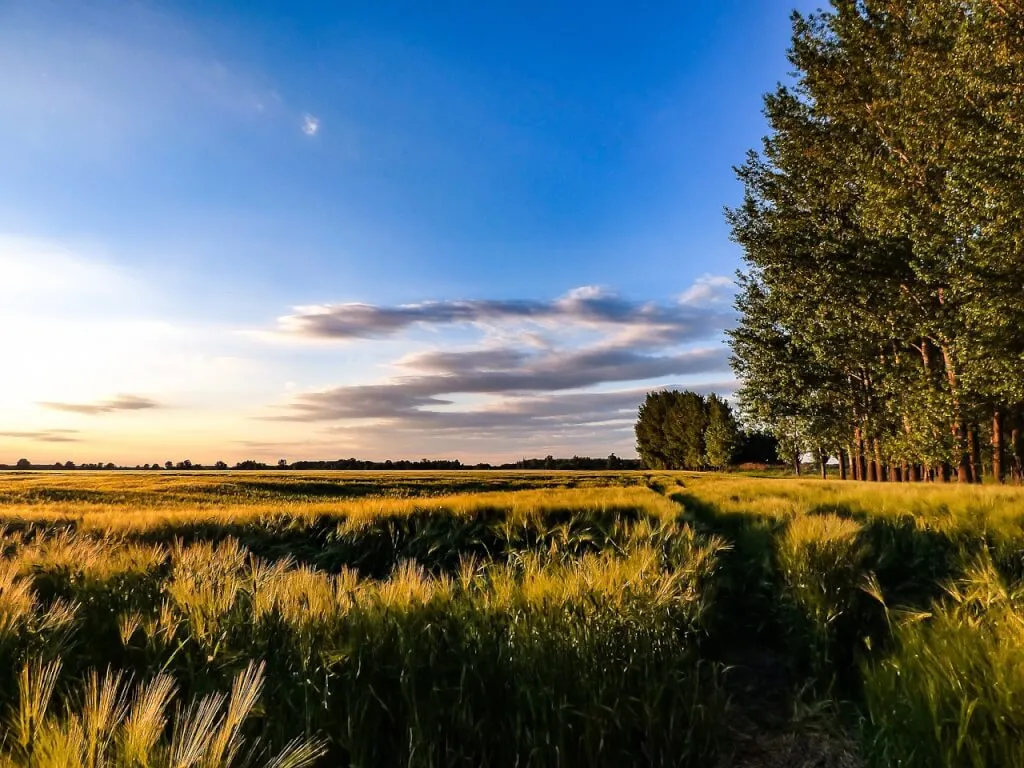
Prairie planting is based on the natural Great Plains of the USA & grasslands above.
Prairie garden borders offer a delightful blend of beauty and practicality for any outdoor space. These borders, inspired by the vast expanses of North American prairies, bring a natural charm to your garden while providing numerous benefits. With their diverse mix of native grasses and wildflowers, prairie borders attract pollinators like bees and butterflies, enhancing biodiversity and promoting a healthy ecosystem.
Prairie garden borders attract a diverse range of pollinators such as bees, butterflies, and birds, enhancing biodiversity in your garden and supporting local ecosystems.
Once established, prairie garden borders require minimal maintenance compared to traditional garden beds, saving time and effort in watering, weeding, and upkeep.
The deep-rooted plants in prairie borders help improve soil structure, increase microbial activity, and prevent erosion, contributing to long-term soil health and fertility.
With their drought-tolerant native plants, prairie garden borders are well-suited to conserving water, making them an eco-friendly choice for dry or arid climates.
Prairie plants offer a dynamic display of colours and textures throughout the seasons, with blooms, seed heads, and foliage providing visual interest from spring to fall.
The diverse plant species in prairie borders provide food and shelter for a variety of wildlife, including insects, birds, and small mammals, creating a thriving habitat within your garden.
Inspired by the sweeping landscapes of North American prairies, prairie garden borders offer a rustic and natural aesthetic, adding beauty and charm to any outdoor space.
By using native plants adapted to the local climate and soil conditions, prairie garden borders promote sustainable gardening practices and reduce the need for fertilizers, pesticides, and other chemical inputs.
Prairie garden borders can serve as living classrooms, teaching gardeners and visitors about the importance of native plants, ecological conservation, and the interconnectedness of plant and animal species.
With their deep-rooted perennials and grasses, prairie garden borders are resilient to extreme weather conditions, including drought, heat, and cold, ensuring long-term garden success and enjoyment.
Prairie planting requires pretty much full sun due to the types of plants usually used. That is not to say that some dappled shade is a no-go. However, if you want the height from grasses such as Miscanthus or Calamagrostis, these will only grow properly in a sunny sight. If not, they will either just put on a mass of low-growing foliage or start to lean out towards the light source.
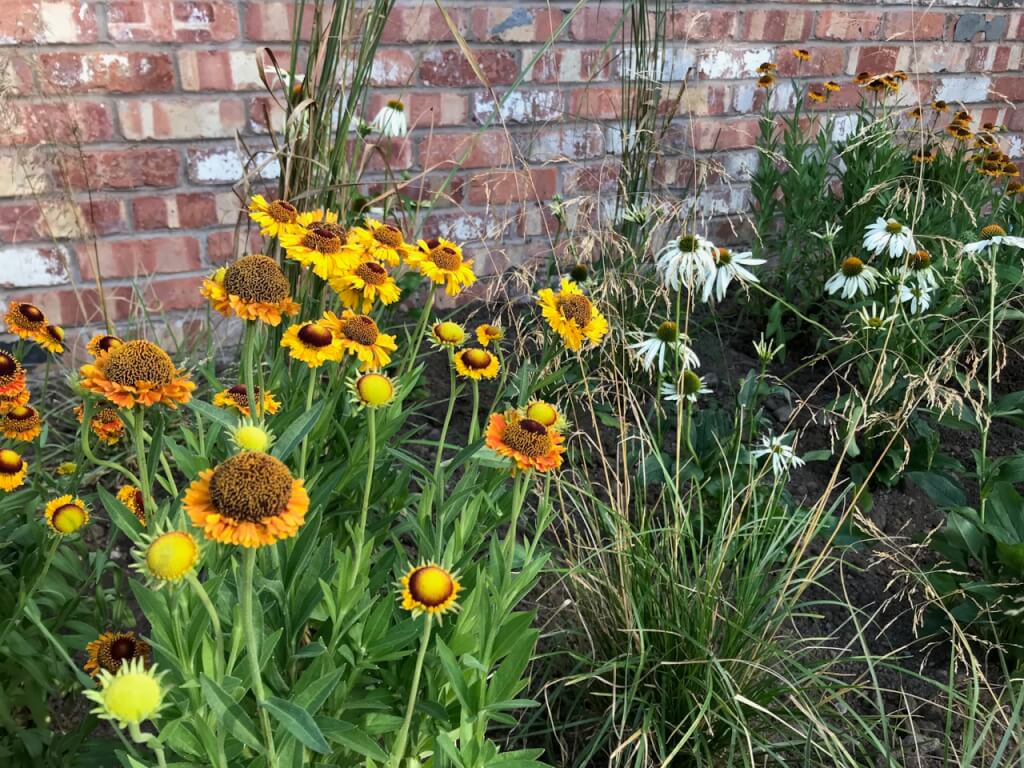
Prairie border planting is usually full sun, just like those open plains of the USA.
Did you know that you can take my course and learn how to become a Garden Ninja yourself? Click here for details
Prairie planting doesn't work in heavy shade. Prairie borders only work in full sun as they mimic the natural habitat of the wide grasslands in the USA. Often, they are baked in full summer sun and then flooded in the winter.
If you're dealing with shade then a different planting palette will be required, I have discussed a variety of shade-loving plants here. This is where you may be using a prairie-style layout but having to switch plant focus onto other foliage-heavy plantings instead.
Planting up a prairie border is relatively simple. You need some restraint, full sun and a bit of creativity. Below are the steps to creating your perfect full-sun prairie garden. These borders provide mid to late-summer drama in the garden. Creating a carefree floating plant scheme which is both low maintenance and high impact.
In a small garden, to get the mass effect you're going to be maybe looking at 7-10 plant species maximum. In a larger herbaceous border, you may choose 20 or 30 plant species. It all depends on the size. Watching my video above may help you get some idea of how much your garden may need as a comparison.
If your soil has not been cultivated in a while or has compaction, you will need to dig it over. The soil will need to be free-draining for a prairie border. If you're dealing with heavy clay soil, you may need to rethink your plans—that or dig in plenty of organic matter to break it up. Prairie plants such as grasses and herbaceous plants such as Echinaceas require free-draining soil by their very origin.
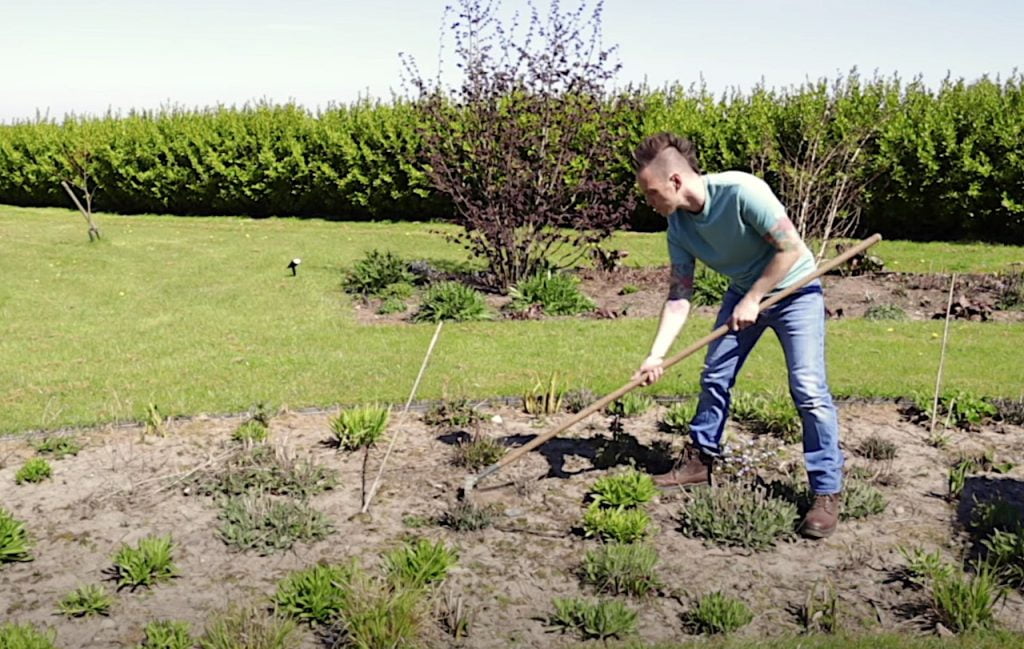
Group them in a minimum of 3 or 5 to start with. Depending on their ultimate growth, ensure there is enough space so they don't strangle each other. Remember: This is mass-effect planting, so even if it feels odd putting so many together in one group, trust me, it will work!
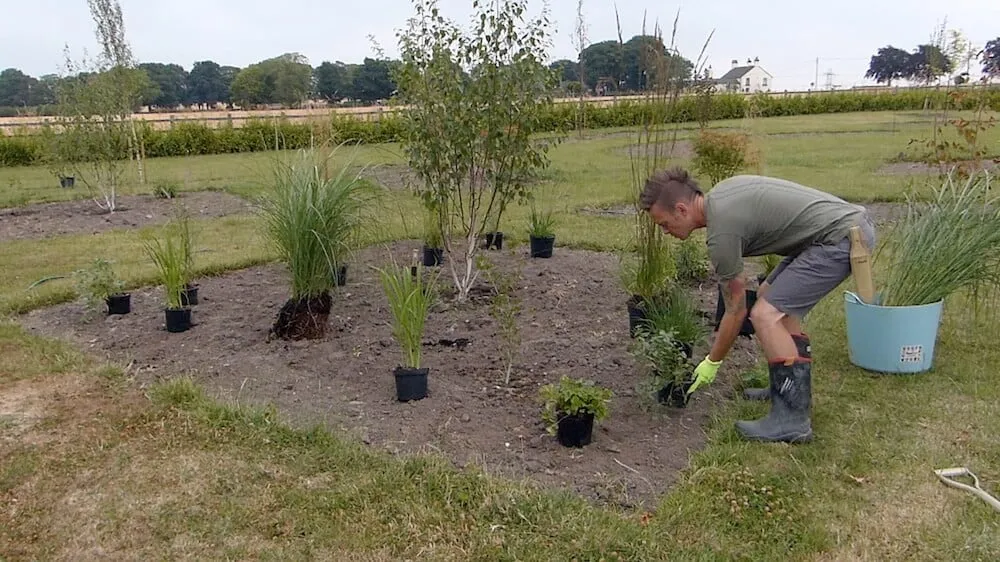
You should layer your prairie border by using taller plants such as the grasses at the back and the smaller specimens at the front. Don't be put off from breaking this rule every now and then, especially if you have space. Then you can create intrigue as to 'what's behind there?'.
You can happily use different cultivars of the same species to use slightly different hues of the same colour. I have demonstrated this with the Achillea by using Achillea 'Terracotta' and 'Walther Funke' together. This can take your planting detail to the next level!
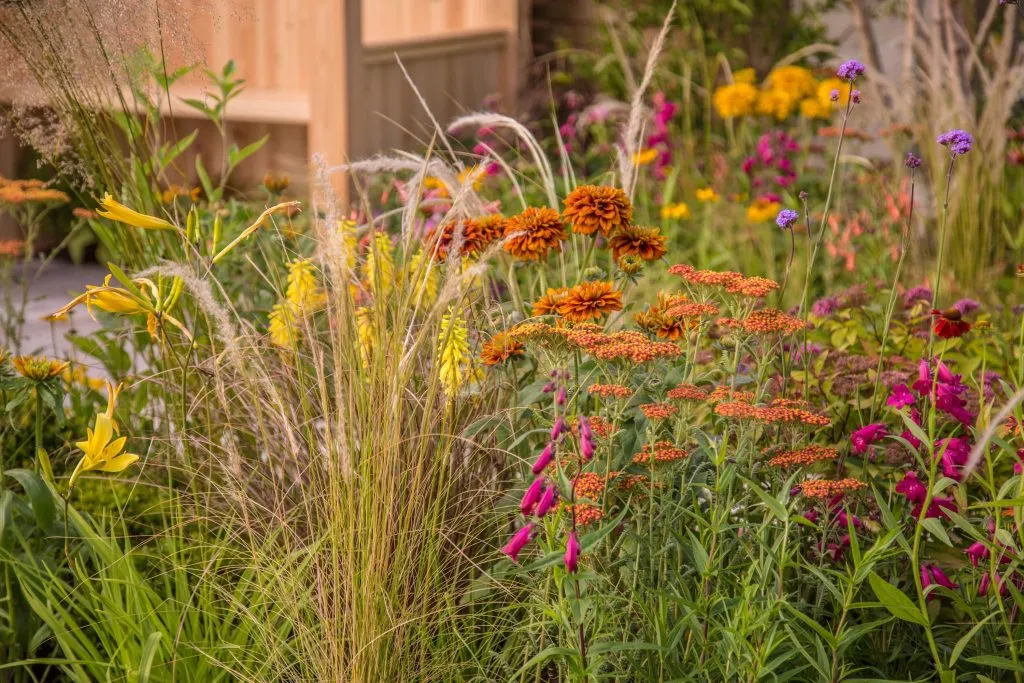
Prairie borders don't just need to be herbaceous. Why not add a small tree or shrub to give some proportion and scale to your border?
Fastigiate forms of trees are excellent at bringing height without taking up too much border space. They also provide structure during the months when the garden has been cut back, usually from March to April.
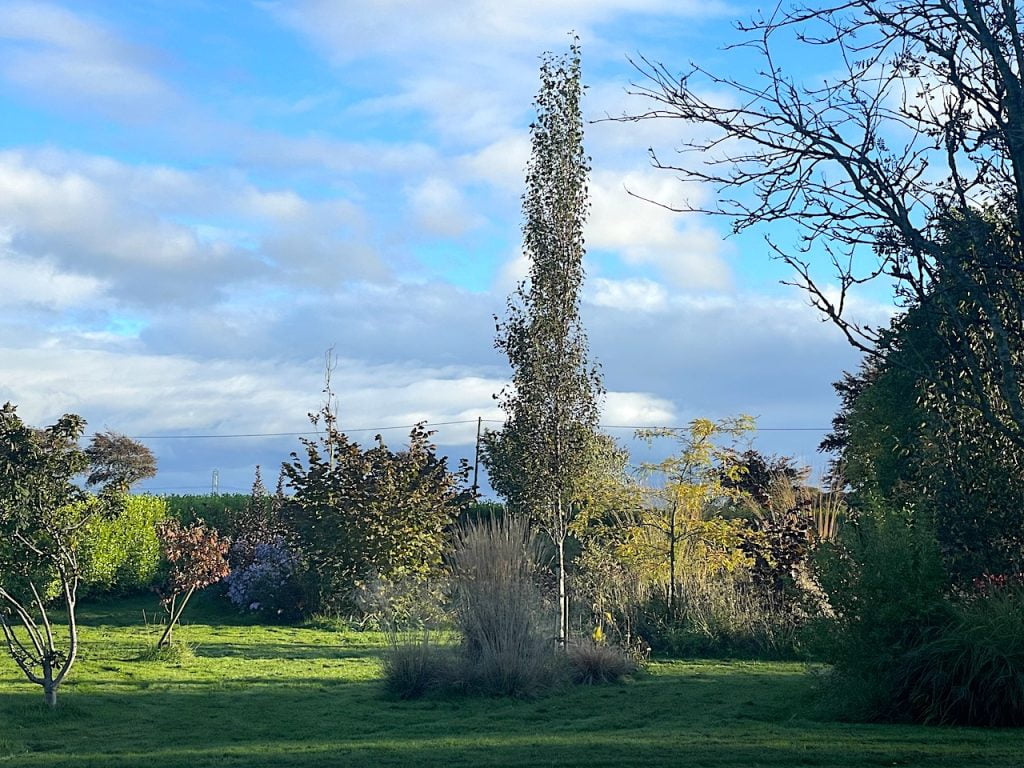
There are no real hard and fast rules for prairie border plants. The best way to choose plants is to go back to visualising what the Great Plains are made up of. Large areas of grasses and self-seeded herbaceous plants are rich with pollen.
These plants have an airy, almost translucent quality about them. No dense covering or cast shade; often experienced with a border of evergreen shrubs. Each area of planting will have a see-through nature allowing other layers to be seen.
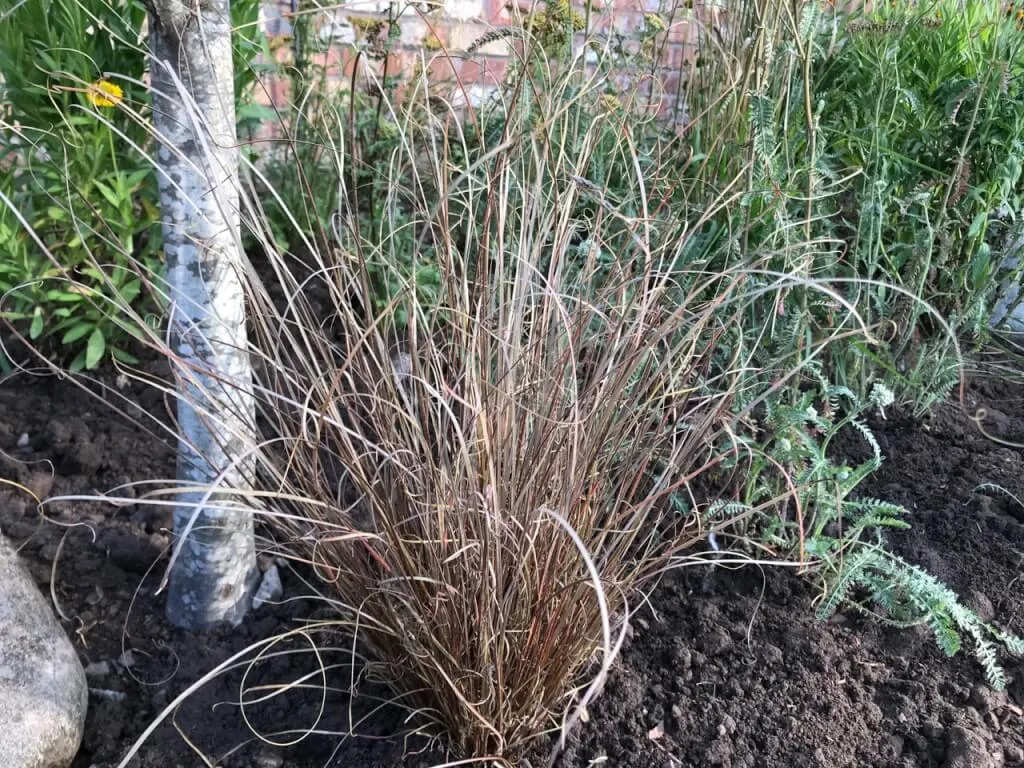
See how light and airy the planting is, you can see the layers between plants above?
These layers are also going to have multiple heights. So you're going to need a mix of height from the grasses and mass from the herbaceous plants. Here are a few of the best herbaceous plants for a prairie border. I've not covered annuals or other seed varieties as I find these are harder for beginners to work with.
Prairie planting is a great choice if you're short on time and don't want to be deadheading and weeding every other night. As prairie borders are planted on mass a number of the plants should support themselves. I tend to find the flowering interest also lasts longer. This is because some plants will bloom slightly earlier than others in their flowering window.
As prairie planting is made up of herbaceous perennials they come back year after year. This means you can leave them after they have finished flowering through the winter months. The grasses will crisp up, giving a real texture to the border, and the herbaceous plants will leave seed heads, which are an excellent food source for birds and wildlife. Yes, a few bits may look a bit tatty, but you can simply snip these out or simply go with the flow of nature!

You may be surprised how low-fuss Prairie borders are!
Maintenance could not be easier with this method. The only month of the year where any real effort is concerned is February. February, you may say! Yes! This is the perfect time to cut things right back to the ground. The grasses can be cut back with a pair of sharp shears. I love my Niwaki Japanese sheers because they are super sharp and fast.
It's the same maintenance for the herbaceous perennials, simply cutting them down to the ground in late winter.
I tend to have a few specimens like Carex that don't require any real maintenance because they keep some structure during the wintertime. Also, if you have followed my guidance on trees and potential prairie shrubs in the video above, you will know exactly why I have included these!
Prairie-style planting can be both high-impact and relatively low maintenance in a garden. Providing you have free-draining soil, which gets a fair share of sunlight, you're set to create a super dramatic border. You have an exciting array of plant species to choose from, some are direct descendants of the American Prairie borders themselves, such as Carex. If you can resist the urge to choose too many species!
A Prairie border can provide food for bees and insects throughout the summer along with a dazzling display of colour. Even during the winter months, the border still delivers drama with its skeleton stems and dried seed heads. Imagine the photo opportunities whilst neighbouring gardens are looking bleak and barren!
Have you planted a Prairie border, or got pictures or advice you would like to share with the Garden Ninja community? Then let me know on social media where you can Tweet, Facebook or Instagram me! Why not subscribe to my Youtube channel for even more garden design hints and tips?
Happy Gardening!


You must be logged in to post a comment.
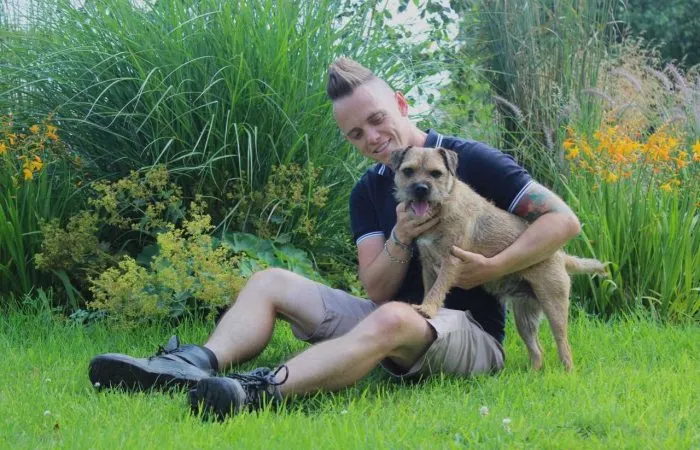
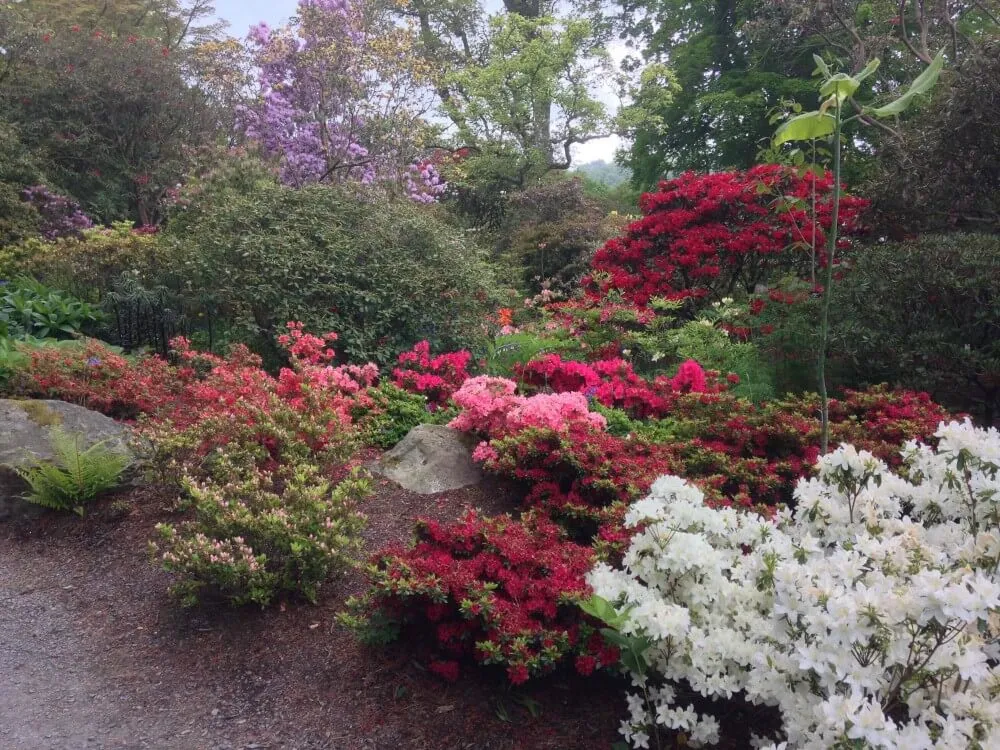
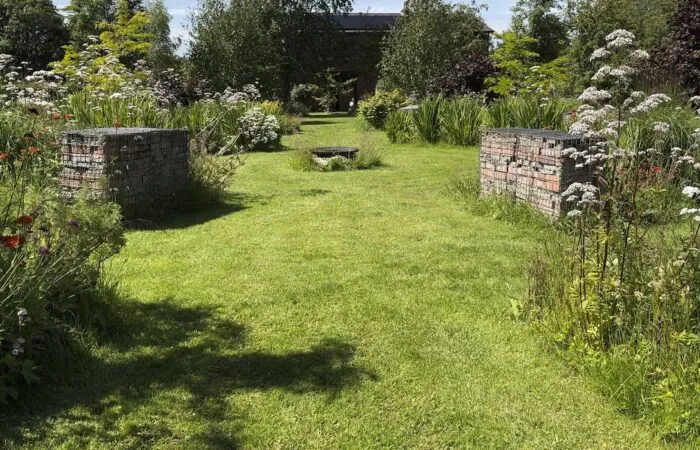
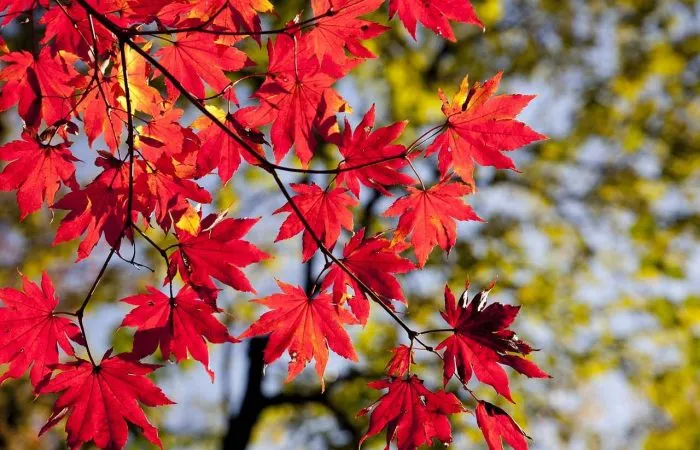

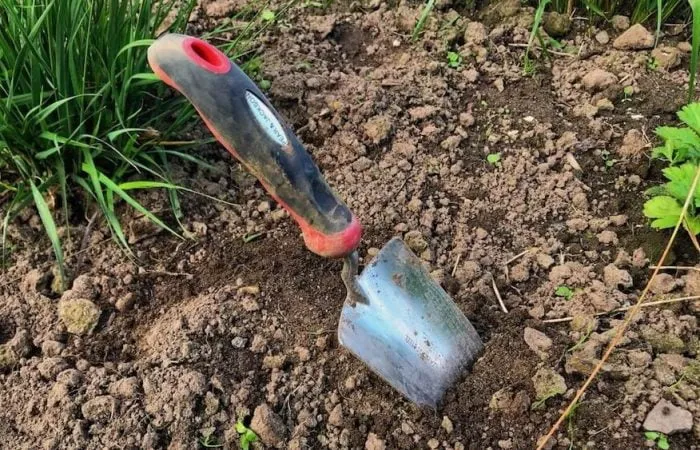
JOIN THE NINJAS
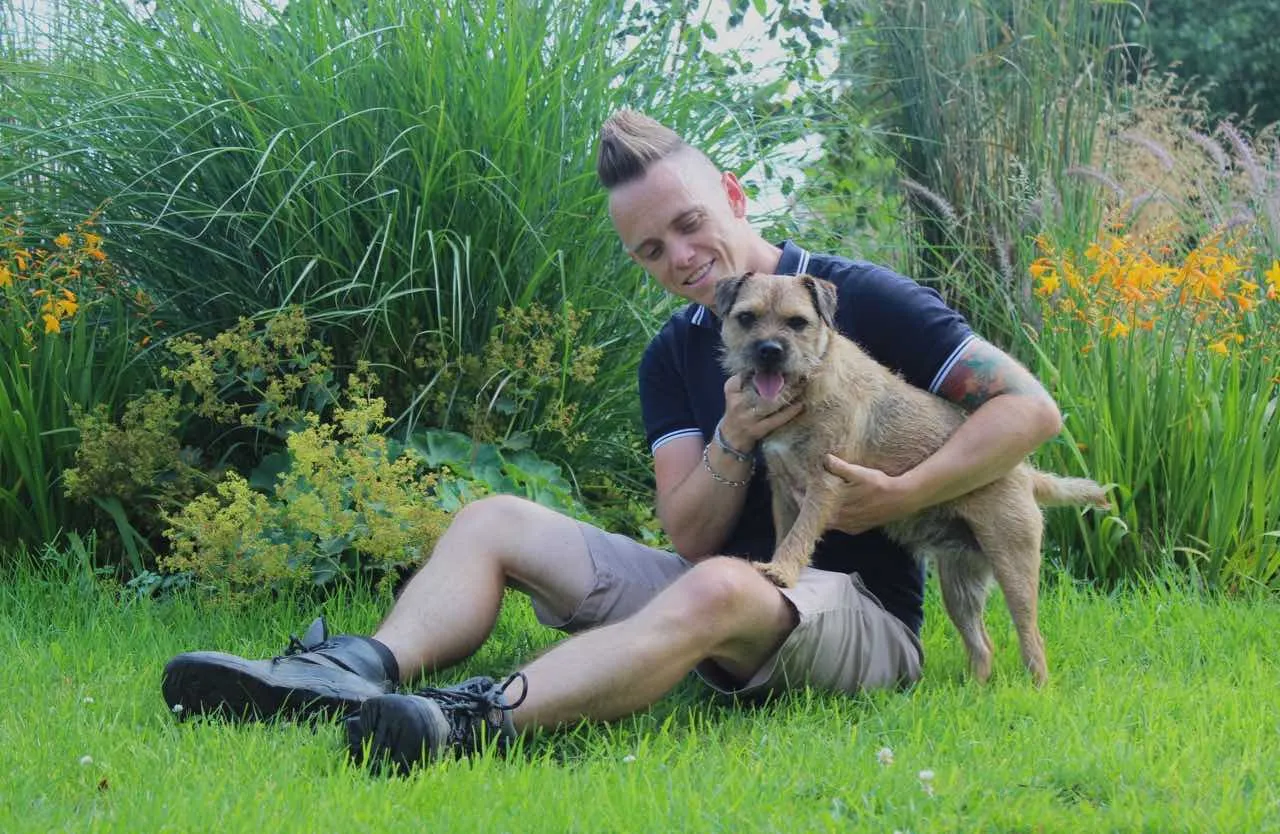
Be the first in line for new Guides, Discount codes and Offers
Thanks. I’m going to give it a try. I always thought that acres of land were needed!
Hi Linda, Many people think that. However even in a tiny border you can get the prairie look. Do post some pictures if you plant one! All the best. Lee
I just found your blog post about Prairie style gardening and I think you’re right. It’s a very nice way to create a garden. I was looking for some ideas on how to design and plant my small garden and your post was very useful! You’ve done such an amazing job on the pictures as well. Thank you so much for sharing this with us!
Hi Fraser. Great to hear from you.
I’m glad you like the prairie planting guide!!
Feel free to subscribe to my YouTube channel where there’s hundreds of how to gardening guides!
https://www.youtube.com/c/GardenninjaUk/
I have three acres of prairie (Weld county, Colorado), and there is a triangle down near the paved road that looks terrible. I’m going to plant it as a prairie garden! It gets full sun and grown weeds very well, so my plan is to cultivate it a little, add compost and plant very drought tolerant species! I’ll send before and after photos!